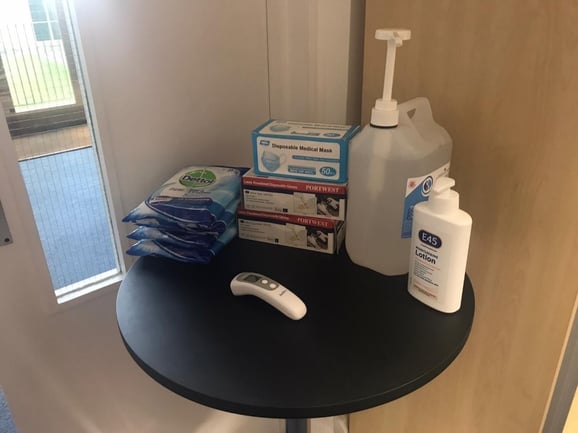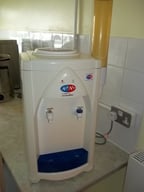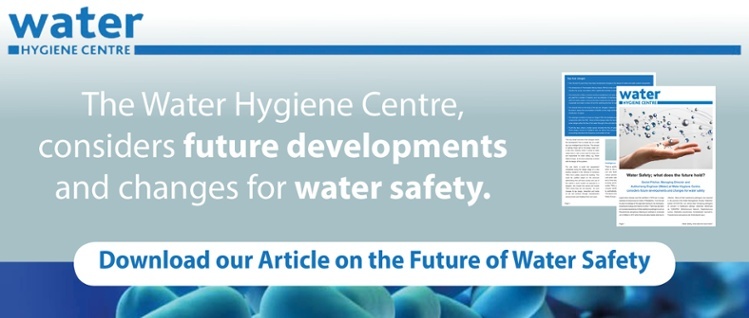
As the COVID-19 Pandemic continues, thoughts are now turning to how our working lives may be different going forward. This blog starts to think about what changes we may see and how they may affect our water systems management.
Water Usage
One of the biggest changes to our water systems during lockdown, has simply been, how much we have used them.
Buildings of all shapes and sizes, all over the UK, have been left unused or partially occupied, reducing turnover and thereby affecting water quality.
It would be easy to assume water usage will return to pre-lockdown levels, but will it?
- Will workplaces ever be at the same capacity again, due to social distancing and increased homeworking?
- Will we wash our hands more frequently?
- Will alcohol gels be a replacement or an addition to existing water facilities?
- Can we use water meters to compare pre and post lockdown usage?
Hopefully, your premises have been suitably managed during lockdown, by such means as outlet flushing. But when this flushing ceases and as we return to the “Infrequently Used Outlet” list, will a risk assessment be undertaken regularly so we are flushing the correct outlets?
The Workplace
All workplaces use water in different ways, depending on the work involved, and to predict individual changes for each type of work would be a lengthy blog. However, to consider potential changes that may occur in the workplace, perhaps we should think about;
- Toilets – staff will of course use facilities as they have always done,
 but will visitors be less inclined to share facilities?
but will visitors be less inclined to share facilities? - Showers – will staff have confidence in sharing these facilities?
For sports venues – will users avoid sharing and shower at home? - Drinking water – how will water dispensers be managed, or will they disappear entirely?A new preference for bringing in water from home or returning to bottled water, will also decrease demand on the water system.
- If more staff are working from home, does water demand need to be recalculated?
At the forefront of the fight against all infections and disease are of course, our healthcare organisations. Once services have returned to near normality, we should ask, will the water system be used differently?
Healthcare
- Increased awareness of hand hygiene will have a direct impact on water usage. But will alcohol gels be increasingly used to the detriment of the water system? Alcohol gels will no doubt be easier and quicker to use by the individual, whereas a wash basin is a shared facility that represents all sorts of water related risks. Will we see a rethink on where and how wash basins are installed?
- Will there be a level of paranoia that will result in visitors being less inclined to use public toilets?
- Will there generally be fewer people in hospitals? Occupancy may have to be reduced to help social distancing, leading to increased consultations and other meetings over telephone and video?
There are many questions at this stage and changes in demand for water is clearly difficult to predict, so perhaps water systems with more flexibility could be the answer?
Water System Design
With all water systems, the lower the “inherent risk”, in theory the fewer issues that there are to go wrong when we lose control. So, as well as seeing a move to “lower-risk systems” such as those with limited water storage, how can we help make water systems more flexible, to ensure we can effectively manage changing domestic water demand?
- Point of use hot water systems that can be locally managed (Turned ‘off’ when not required);
- More accessible isolation valves to manage the differing sections of buildings;
- Where cold water storage is required, installing quick to use bypass pipework;
- Installing ‘level’ controls on cold water tanks;
- The installation of auto-flushing technology. (see below)
There are a number of practical procedures we could put in place to help manage these situations more effectively and relatively cheaply. But considering lockdown and subsequent enforced remote working, what could we do at a touch of a button?
Technology
Lockdown or no lockdown, technology will have an increased part to play in water quality management. But will the experiences gained recently, make a more urgent case for its use?
- BMS – the ability to monitor systems remotely will have been a significant advantage during lockdown, both for PPM and auditing purposes.
- Automatic flushing systems;
- Intelligent taps/showers can be set to flush at a desired frequency, no matter the use;
- Drainage [Dump] valves can help keep cold water temperatures down via heat gain with timed or temperature set controls;
- Will we see cold water tanks with this ability to ‘dump’ water automatically?
- Video Conferencing – its increased use has helped keep the day to day management of water effective and on track.
- Online PPM management – an online portal to keep all records will also greatly benefit effective continued management.
Technology is already a useful tool in water systems management, and perhaps it is a question of when, and not if, we will continue to have to physically walk around a building to take temperatures and flush outlets?
Other Changes
So, what else could change as a result of lockdown?
- Fewer staff at workplaces has given people the opportunity to learn new skills, for example, security guards becoming involved in flushing regimes.’ The greater the number of staff that can cover each other, the more resilient your monitoring regime will become.
- Increased time at home may also see a rise in home entertainment, including the use of home exercise equipment and spa pools, thus increasing the amount of risk systems an individual is exposed to and fewer gym goers using external facilities.
- Will a more flexible working life lead to reduced traffic, less stress, spread out working hours and keeping water systems in use outside the 9-5 period?
Significantly, at this stage, our main priority is getting premises up and running and safe to use once more. However, having done this, when will we start to think about what we have learned and how we could make lockdown easier, if and when this happens again.
Editors Note: The information provided in this blog is correct at date of original publication – June 2020.
© Water Hygiene Centre 2020







